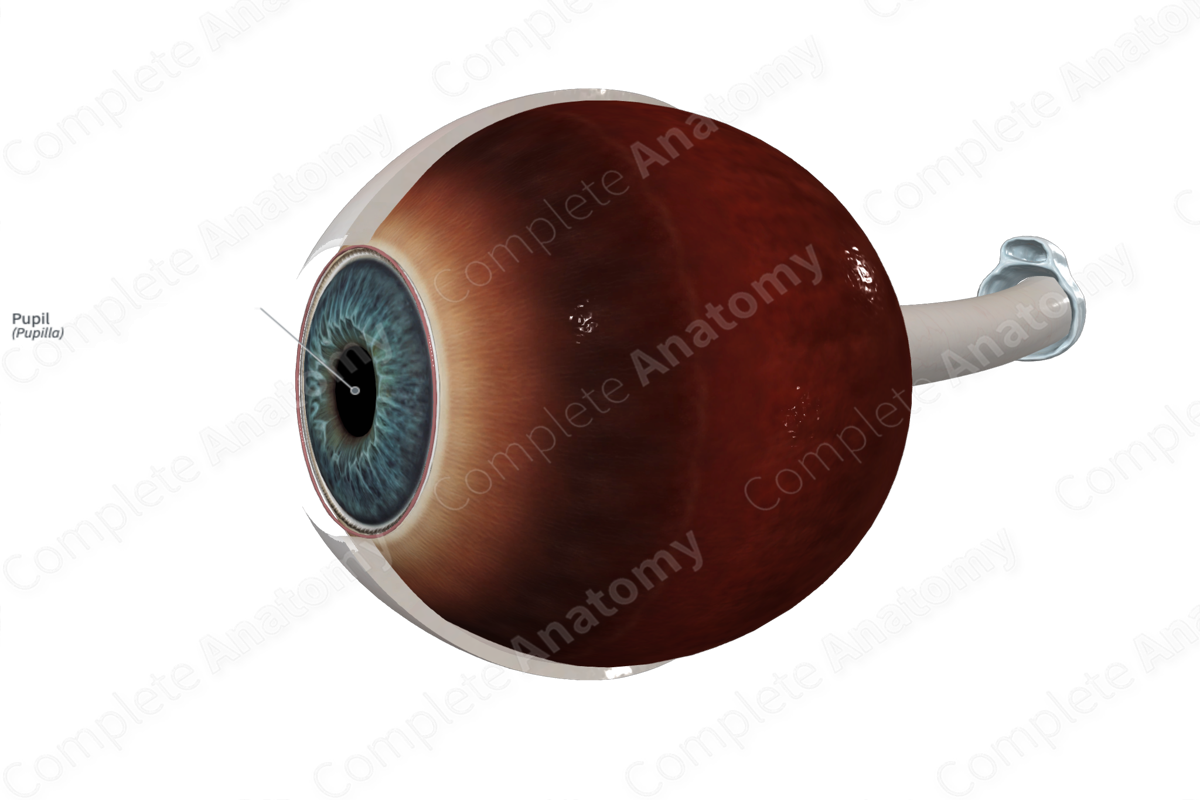
Quick Facts
The pupil is the opening at the center of the iris of the eye, through which light enters the eye (Dorland, 2011).
Related parts of the anatomy
Structure and/or Key Feature(s)
The pupil is the central aperture or opening of the iris of the eye. It allows light to enter the eyeball, be focused by the lens, and eventually impinge on the retina. In normal illumination, the pupil appears black, since light entering the eyeball is absorbed by the retina and not reflected (except in the case of flash photography, when the pupil can be seen as red due to reflection from the vascular choroid). The diameter of the pupil is continuously variable so as to regulate the amount of light entering the eye, i.e., under different lighting conditions. This is an involuntary response known as the pupillary light reflex.
In humans, the pupil is round, however, in species such as cats and goats, the pupil is a vertical or horizontal slit, respectively.
Anatomical Relations
The pupil is located at the center of the iris, with the lens of the eye directly posterior to it. The diameter of the pupil is regulated by the iris by way of two sets of involuntary muscles, the sphincter pupillae and dilator pupillae muscles. The sphincter pupillae is arranged circularly and decreases the diameter of the pupil i.e., constriction, while the dilator pupillae muscle, which is arranged radially around the pupil, increases the size of the pupil (dilation).
Function
The pupil allows regulation of the entry of light into the eye to adjust to the level of ambient illumination. In bright light the pupil is small and the depth of focus.
Clinical Correlates
—Mydriasis
—Fixed, dilated pupils
References
Dorland, W. (2011) Dorland's Illustrated Medical Dictionary. 32nd edn. Philadelphia, USA: Elsevier Saunders.



